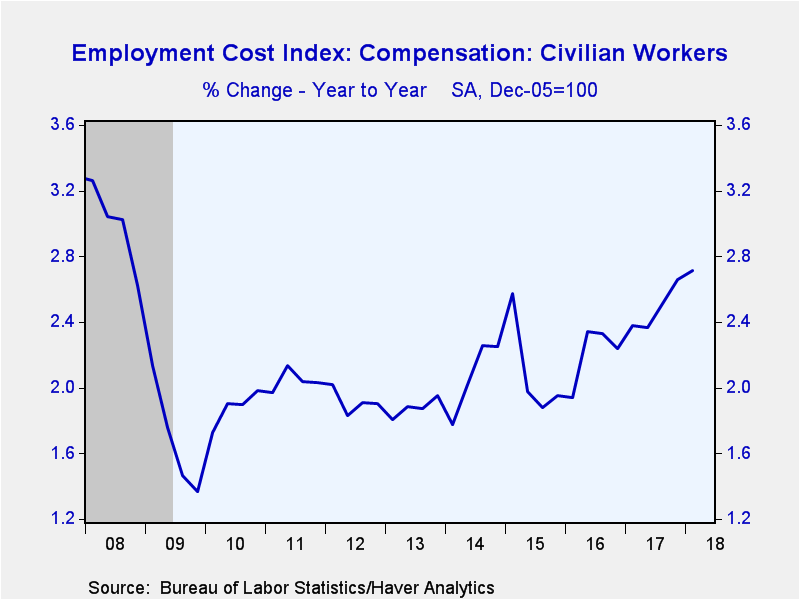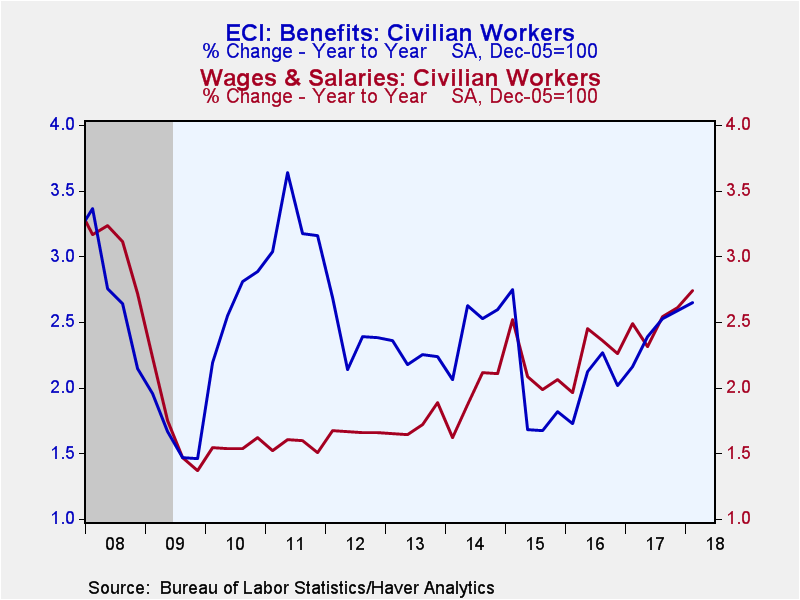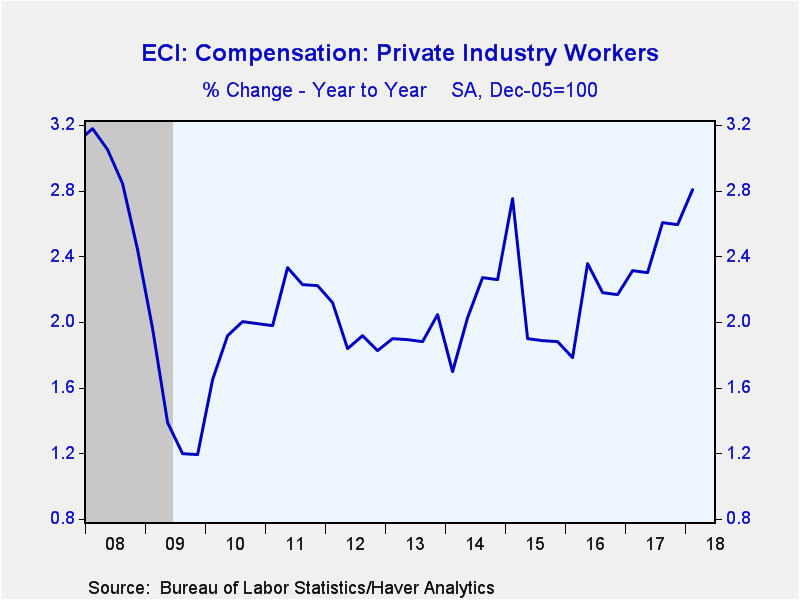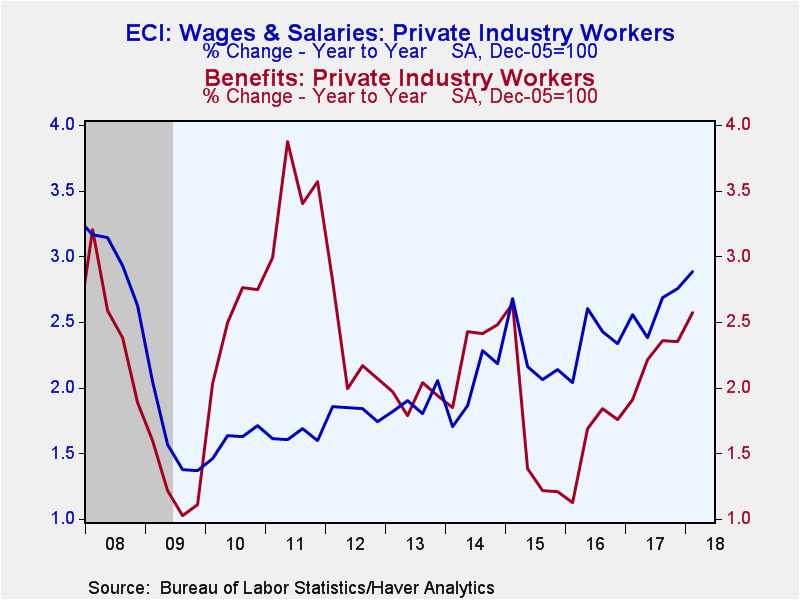 Global| Apr 27 2018
Global| Apr 27 2018U.S. Employment Costs Strengthen in Q1
Summary
The employment cost index (ECI) for civilian workers rose 0.8% q/q in Q1 2018, tying Q1 2017 as the strongest quarterly move since late 2007. This Q1 move firmed from 0.6% in Q4 2017 and generated a y/y rise of 2.7%, the same as in [...]
The employment cost index (ECI) for civilian workers rose 0.8% q/q in Q1 2018, tying Q1 2017 as the strongest quarterly move since late 2007. This Q1 move firmed from 0.6% in Q4 2017 and generated a y/y rise of 2.7%, the same as in Q4. The Action Economics Forecast Survey had looked for a 0.7% q/q increase.
Wages and salaries for civilian workers (including private plus state & local government, but not federal government) were up 0.9% in Q1 (2.7% y/y), compared with 0.5% in Q4. Benefits for civilian workers rose 0.7% (2.6% y/y), also comparing with 0.5% in Q4.
Employment costs in private industry advanced a full percentage point in Q1 after Q4's weaker 0.5% and they were up 2.8% y/y. Gains in Q1 were seemingly "everywhere". Finance and insurance had the largest increase in the quarter, 1.8%, but sectors often thought to be less dynamic also had sizable rises: wholesale trade 1.0%, retail trade 1.1%, transportation and warehousing 1.3%, and accommodation and food services 1.4%. Among other industries, manufacturing compensation was up 0.7%, professional services 0.8%, and information 0.6%. Even as these might appear somewhat sluggish, they all showed improvement from Q4 moves. The only sectors with compensation gains less than in Q4 were administrative and waste support, with 0.5% in the latest period versus 0.6% in Q4, and educational services, also with the 0.5% versus 0.6%; labor costs in hospitals increased 0.5% in both periods.
The wages and salaries component in private industries also advanced a full percentage point versus 0.5% in Q4; the y/y gain was 2.9%. Benefits increased 0.8% in Q1, doubling their 0.4% rise in Q4, with a 2.6% increase y/y.
Labor costs slowed noticeably among state and local governments, with Q1 up just 0.4% after 0.7% in Q4; the y/y increase was 2.3%. Wages and salaries in that sector were also up 0.4% in Q1, following 0.6% in Q4, generating a modest 1.8% rise y/y. Benefits rose 0.5% in Q1 following Q4's 0.9% and had a y/y increase of 2.9%.
The employment cost index figures are available in Haver's USECON database. Consensus estimates come from the Action Economics survey in Haver's AS1REPNA database. This quarter's release included annual seasonal adjustment revisions affecting the last five years.
Carol Stone, CBE
AuthorMore in Author Profile »Carol Stone, CBE came to Haver Analytics in 2003 following more than 35 years as a financial market economist at major Wall Street financial institutions, most especially Merrill Lynch and Nomura Securities. She has broad experience in analysis and forecasting of flow-of-funds accounts, the federal budget and Federal Reserve operations. At Nomura Securites, among other duties, she developed various indicator forecasting tools and edited a daily global publication produced in London and New York for readers in Tokyo. At Haver Analytics, Carol is a member of the Research Department, aiding database managers with research and documentation efforts, as well as posting commentary on select economic reports. In addition, she conducts Ways-of-the-World, a blog on economic issues for an Episcopal-Church-affiliated website, The Geranium Farm. During her career, Carol served as an officer of the Money Marketeers and the Downtown Economists Club. She has a PhD from NYU's Stern School of Business. She lives in Brooklyn, New York, and has a weekend home on Long Island.









